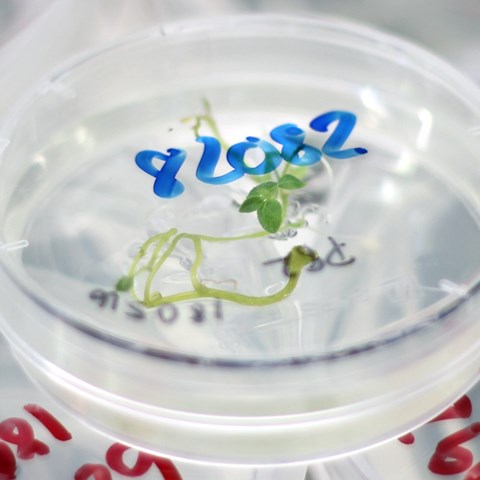Contact
mistrabiotech@slu.se
+46 (0)18 672232

The ruling by the European Court of Justice on gene edited crops this summer have resulted in more questions being raised. The researcher Dennis Eriksson concludes that researchers and legislators need to think over the question if it is important to differentiate between random and targeted genetic alterations in the EU’s legislation on GMOs. Now the Swedish Board of Agriculture is asking for clarifications and the Commission’s Chief Scientific Advisors even recommends revisions of the legislation on genetically modified crops.
Is it relevant to control how genetic changes have occurred through the biosafety legislation? That is the key issue in a recently published scientific article in which the researcher Dennis Eriksson, at the research programme Mistra Biotech, gives an overview of the EU regulatory framework for genetically modified organisms (GMOs) and its potential application also on newer plant breeding methods, where you know more exactly which DNA sequences that is altered.
-Because it is not possible to see any differences in the crop or the end-product if a genetic change has occurred randomly in the breeding process or if more targeted methods are the reason for the change. Is there any point for regulating the different methods differently? says Dennis Eriksson. You have to ask yourself what, in this context, is relevant from a biosafety point of view.
He suggests that researchers and legislators, more thoroughly than before, review this question. And he is not the only one. The Swedish Board of Agriculture (SBA) recently raised a number of questions to the Commission, including clarification on what constitutes a “method”, and also if it is not reasonable to presume that molecular changes that are identical would carry the same potential risk, no matter how they were produced.
Plant breeding – to develop new, improved crop varieties – is based on the existence of a diversity of traits to select from. And the basis of the diversity is genetic differences in the plant genomes. Since the 1970s researchers have been able, with increasing precision, to make deliberate genes changes with molecular genetic techniques. Partly due to knowledge about which of the plants’ genes that regulate interesting traits (i.e. cultivation or health related characteristics), and partly due to genetic tools.
This summer the European Court of Justice ruled that the strict GMO legislation should apply also to targeted mutagenesis, such as applications of the genome editing Crispr method. The court concluded that the products of directed mutagenesis should be regulated under the GMO Directive. A verdict that a large part of the research community is skeptical to, and the reason for the questions from the SBA. And on November 13 the Commission’s Chief Scientific Advisors published a statement which highlights the contradiction of the fact that today's EU regulation exempt the old random mutation techniques from regulation, and suggests that that the GMO Directive should be revised. Will the Commission act based on the statement from its scientific advisors?
-It is not likely that the Commission takes any action before the European Parliament election in May 2019, says Dennis Eriksson.
More information
Dennis Eriksson, researcher
Department of Plant Breeding
Swedish University of Agricultural Science, Alnarp
+46 (0)73-566 95 22, dennis.eriksson@slu.se
mistrabiotech@slu.se
+46 (0)18 672232